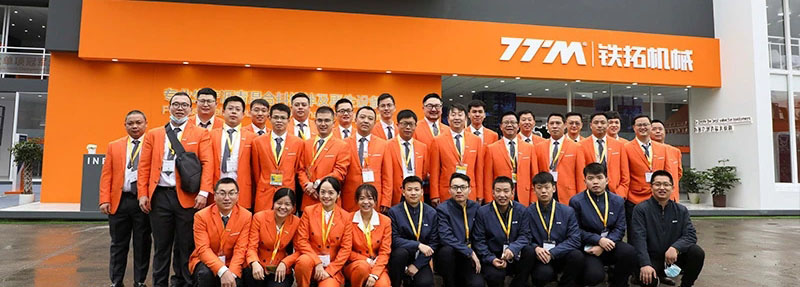Why Contractors Are Switching to Asphalt Batch Type Mix Plant Solutions
If you’ve ever watched a project bleed money because of mix inconsistencies or surprise downtime, you already know the pain. Traditional drum plants look cheap on paper—until you tally the hidden expenses. That’s why forward-thinking contractors are asking one simple question: “Can asphalt batch type mix plant solutions really shrink my cost per ton without sacrificing quality?” Spoiler alert: yes, they can, and the math is prettier than you think.
Crunching the Numbers: Where the Savings Hide
Let’s get nerdy for a second. A modern batch plant hits ±0.5 % accuracy on bitumen and filler, while older continuous plants wander anywhere from 1.5 % to 3 %. On a 200-ton day, that tiny deviation can waste 1.2 t of binder. At 600 USD per ton, you’ve kissed 720 USD goodbye before lunch—every single shift. Scale that across a 200-day paving season and you’re staring at 144 k USD in vanished profit. Ouch.
The Flexibility Factor: One Plant, Five Mix Types in a Shift
Here’s where batch plants shine like a diamond in a goat’s… well, you get the picture. Need a porous friction course for the runway at 9 a.m. and a high-modulus base for the highway at 2 p.m.? No problem. Swap the screens, punch the recipe into the PLC, and you’re rolling again in 12 minutes flat. Try that on a drum plant without a 4-hour clean-out marathon. Clients love the agility, and your crew clocks out on time—that’s how you keep overtime from eating the job’s margin.
Cutting Edge Features You Shouldn’t Pay Extra For
When shopping for asphalt batch type mix plant solutions, look beyond the glossy brochure. These goodies should come standard, not as “optional extras”:
- Parallel batching system: weigh hot aggregates while the previous batch is still mixing—throughput jumps 18 %.
- Self-optimizing burner: trims fuel use 0.9 L per ton by auto-tuning air/fuel ratio to aggregate moisture.
- Cloud-based telematics: sends phone alerts if bearing temps stray; prevents catastrophic shutdowns on Friday evening (trust me, nobody wants to hunt a 200-ton dryer on a weekend).
Real-World Case: 14 % Reduction in Total Cost of Ownership
In 2023, a Midwestern county DOT swapped a 2005 drum plant for a 240 t/h batch plant with the specs above. Result? Their average cost per ton dropped from 58.30 USD to 49.90 USD within six months. Maintenance hours fell 22 %, and they avoided one full shift of rework on a state route because the sieve curve stayed in spec. The plant paid for itself in 18 months—way faster than the 36-month depreciation table predicted.
Environmental Perks That Keep Regulators Happy
With EPA silica and benzene rules tightening, stack opacity is a big deal. A batch tower with a secondary baghouse can hit <5 mg/m³ particulate, well below the 10 mg limit in most jurisdictions. Add a VFD on the induced-draft fan and you knock another 12 % off electric draw. Incentives? Some states now rebate 0.25 USD per ton for sub-80 mg NOx. On a 300 k ton year, that’s 75 k USD back—not exactly chump change.
Common Buying Mistakes (and How to Dodge Them)
- Over-sizing the dryer: bigger isn’t always better. A 3 % moisture aggregate only needs 9 t/h of evaporation; an oversized burner just wastes fuel.
- Ignoring RAP compatibility: insist on a ring-type feed chute that handles 40 % recycled asphalt pavement without bridging—future-proof your investment.
- Forgetting cold-climate options: if you pave in North Dakota, demand insulated bitumen tanks and hot-oil heaters rated to –30 °C. Skimp here and you’ll literally freeze your profits.
Financing Hacks: Keep Cash in Your Pocket
Equipment leasing rates are hovering around 6.2 % APR for A-credit buyers, but some OEMs offer 0 % for 24 months on the PLC upgrade package. Roll the retrofit into the same note and you’ll preserve working capital while still booking depreciation. One Canadian contractor used this trick to free up 1.4 m CAD, which they redeployed into a micro-surfacing crew—doubling revenue the following fiscal year. Smart, right?
Quick Maintenance Checklist for 99 % Uptime
Print this, laminate it, stick it on the control room door:
- Every shift: check baghouse differential; >150 mm H₂O means bags are blinding.
- Weekly: calibrate load cells—don’t skip this, even if the HMI says they’re “fine”.
- Monthly: grease the pug mill door seals; a 5-dollar tube saves a 5-hour rebuild.
Bottom Line: Is the Jump Worth It?
Add up the fuel savings, mix accuracy rebates, and reduced rework, and most operators see a 10–15 % drop in total cost per ton within the first season. Combine that with tighter environmental compliance and the agility to chase niche high-margin jobs, and the answer is a resounding yes. So the real question isn’t “Can I afford to upgrade?”—it’s “How much am I losing every month I wait?”

